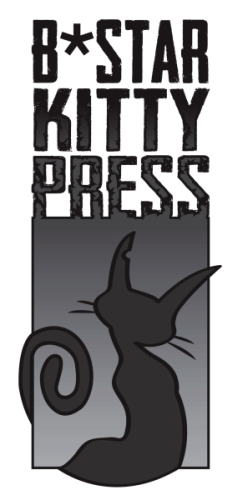Writing & Publishing Articles
Technological advances have redefined the publishing process; digital books and print-on-demand services have made getting a book to market an affordable and achievable goal for anyone with the required spark, talent and dedication. That's not to say it's an easy process - most great art is the product of a lot of time and toil - but here are a few tips from B*Star Kitty Press to help ensure your hard work pays off:
1. Don't be precious with your first draft.
Accept that a lot of it won’t survive intact. Few writers get it even close to right first time, and whole sections may need to be altered, condensed, transposed or cut completely to serve the need of the project. You may love a scene or a bit of dialogue for personal reasons, but you need to be brutal about editing decisions, even when they hurt. Which leads onto the next tip(s)...
2 + 3. Find a good editor + learn to take criticism.
This needn’t be an industry professional. Maybe your husband, sister or best friend has a good head for story and language and an eye for detail. If possible, get multiple "beta readers" to give feedback. It's important that they feel they can be honest with you, including telling you when something doesn't work; it's easy to shower someone with praise, but less so to tell them that their protagonist's motivation is implausible or point out a gaping plot hole. Truth is key. Platitudes don't help anyone become a better writer.
4. Take care with formatting.
Whether for print or digital publication, it's vital that your document is formatted neatly, consistently and appropriately for the relevant medium. You’ll need to consider things like fonts/typefaces, page numbering, paragraph indents, margins, line spacing and embedded digital content. Always take time to preview your book thoroughly once it's been converted to its final format before hitting "publish" or "print".
5. Don't bodge your cover.
Do an image search for the term "worst Kindle covers". You don't want your book to appear alongside these results, do you? All these authors somehow looked at that cover art and thought, 'Yeah, that'll do.' It shouldn't. Regardless of axioms, we do judge books by their covers. You need cover art that sells your book to potential readers. If you know a genuinely talented artist or graphic designer whose skills you can utilise, then great. If you have to, pay someone for a quality cover (B*Star can even recommend adept, affordable artists), but don't just bodge it yourself in Paint. You’d be doing yourself and the indie book market a disservice.
6. Build your profile.
Get your name out there and network with other indie authors and indie readers. Use platforms like Facebook, Twitter, Instagram and GoodReads to connect and promote. Book trailers and readings can be uploaded to YouTube, and you may want to join online writing communities to reach out to peers and hopefully convert readers. Foster good relations and forge supportive alliances with fellow writers; this opens the door to review-swaps and greater exposure if you help to promote one another.
|
|


